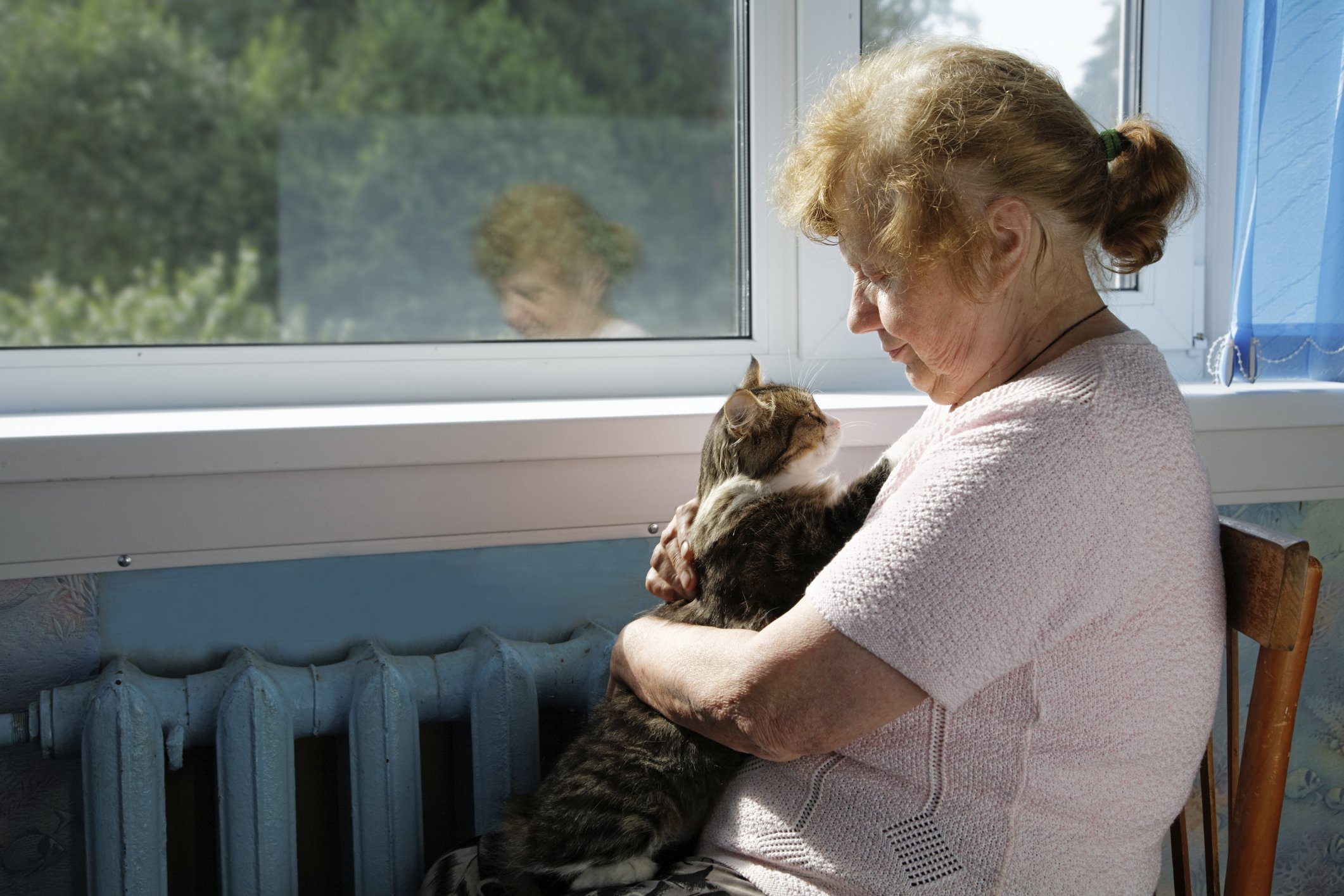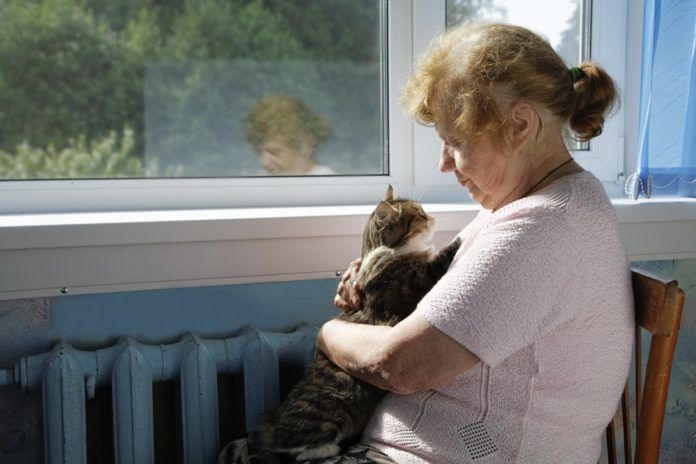Knowing when it’s time to euthanize a beloved cat is obviously never easy, not even when your cat has reached a venerable age. When she’s young or middle-aged but suffering from a serious illness or traumatic injury, it becomes even more difficult.
But regardless of your cat’s age, the same factors apply when it comes to evaluating her quality of life. Is she still eating? Does she still enjoy interacting with people? Is she physically comfortable? Can she still control her bladder and bowels? Can her medical problems still be managed? When the answer to most of those questions is no, experts feel that it’s time to consider euthanizing your cat.
“Euthanasia is a really good thing in veterinary medicine,” explains John Berg, DVM, DACVS, professor of Small Animal Surgery at the Cummings School of Veterinary Medicine at Tufts University. “We’re lucky that we can spare animals who are suffering through euthanasia. No veterinarian likes doing it — and it’s a hard thing for us to do — but it’s a good thing.”
thinkstock


When it’s appropriate
Euthanasia is performed in order to relieve suffering when medication or surgery are unable to help an animal. Choosing to end a pet’s life this way is one of the most difficult yet kindest and most caring decisions an owner can make. Because you know your cat best, only you can decide when the time is right — but don’t hesitate to ask your veterinarian to help guide you.
Most veterinarians are very good at helping owners understand when the quality of life has declined to the point that it is time to say goodbye. It’s important to consider that when pets have more bad days than good, when they cease interacting with owners, or when medical problems can’t be controlled or are too burdensome, then it’s probably time to say goodbye.
Evaluating quality of life
Age and health status are factors, but in the end, quality of life — a cat’s ability to eat, drink, move about comfortably, and give and receive affection — is what counts the most. Pet loss counselor Betty J. Carmack, RN, EdD, author of Grieving the Loss of a Pet, suggests that part of that process is thinking about what your cat used to really love to do when she was younger or more fit, whether that’s climbing to the top of a cat post, chasing a ping pong ball, or simply lying in your lap purring.
“If the animal can’t do certain things anymore, what kind of quality of life is the animal having?” says Dr. Carmack. “Some things feel more minor; other things feel more major. I help people try to look at what it is that gave the animal’s life pleasure.”
Dr. Carmack also helps people determine their bottom line for quality of life. Examples might be if a cat can no longer stand or stops eating or has pain that can’t be managed. Having this type of guideline in mind helps to make the decision more clear.
Toward the end of life — especially if they have a disease, such as cancer or a heart problem — cats slow down considerably. They may eat less, sleep more and show less interest in their surroundings. Those things alone are not signals that a cat is ready to die, however. Your aging cat can still take pleasure from lying in a favorite sunny spot or having his ears scratched.
When he no longer responds to those things, or turns away from his once-beloved food bowl, it may be a sign that his interest in life is waning. While the end may come as a series of small and subtle changes, it’s usually quite clear when a cat is suffering and no longer enjoying life.
“When the time for euthanasia comes, it’s going to be obvious to you,” says Dr. Berg. “Don’t worry about every little abnormal thing your cat does in the meantime. Make whatever time is left be as good as it can be, and as worry-free as possible.”
You may find that your cat goes on relatively normally for some time, and then takes a sudden, dramatic turn for the worse. This can be upsetting, and you may blame yourself for missing signs that your cat’s condition was worsening, but Dr. Berg emphasizes that that’s generally not the case.
“With a lot of diseases we see, it’s not necessarily a really slow, agonizing, long, downhill course,” he explains. “Very often, the turn that prompts people to get serious about thinking about euthanasia is fairly sudden. That’s good because it makes the change obvious and it’s not as difficult for the owner.”
Be prepared when that time comes to euthanize your pet. In timing the procedure, ask yourself:
Is there a particular time of day, or a particular time of the week, that would make it a little easier? For example, would you want to do it on Friday afternoon so you’d have the weekend to be by yourself and grieve the loss?
Would the end of the day be easier for you and your family than the middle of the day?
Additionally, consider whether you would prefer to take your cat to the veterinarian for euthanasia or have the procedure performed at your home. Many veterinarians now make house calls, especially when euthanasia is necessary. This can be beneficial if your cat is fearful of trips to the veterinarian and you want her to feel safe and comfortable in her own home.
Consider needs of other pets
Another benefit of euthanasia at home is that it helps your other pets understand that your cat is now gone. Animals display a sense of loss when their companions die, and letting them sniff the body can help them know that their feline friend won’t be returning. Some surviving cats display grieving signs, which may include over-grooming, excessive vocalization, reduced appetite and changes in sleeping habits.
Let yourself grieve the loss
Just as important as knowing when to say goodbye is also recognizing that it’s okay to grieve. The tears and rituals of grieving the loss of our pets are as comforting and necessary as they are with our human friends and family. If you fear that friends, family or co-workers won’t understand or be supportive, you can take advantage of the many pet loss hotlines, support groups and chat rooms that are available nationwide or online. Attending a support group or calling a hotline is a way of sharing your grief with like-minded people.
Memorializing a beloved cat can take any number of forms: lighting a candle, framing a favorite photo, planting a living memorial such as a tree or flowering plant, scattering cremated remains in a special place, or saving a collar, tags and a favorite toy in a special box. If you want to do more, consider making a donation in your cat’s memory to a pet health research organization or fund or to your local animal shelter or a cat rescue group.
However you choose to honor the life of your animal companion, remember that it’s okay to cry and feel the loss for an undetermined length of time. “Crying is emotionally healing,” says Dr. Carmack.
Allow yourself to be supported during those times by finding people who can support you, and be responsive and caring. People often feel that their pets have taught them life lessons, Dr. Carmack says, and that legacy remains. “Try to look for the lessons; look for the gifts,” she says. — Catnip staff




